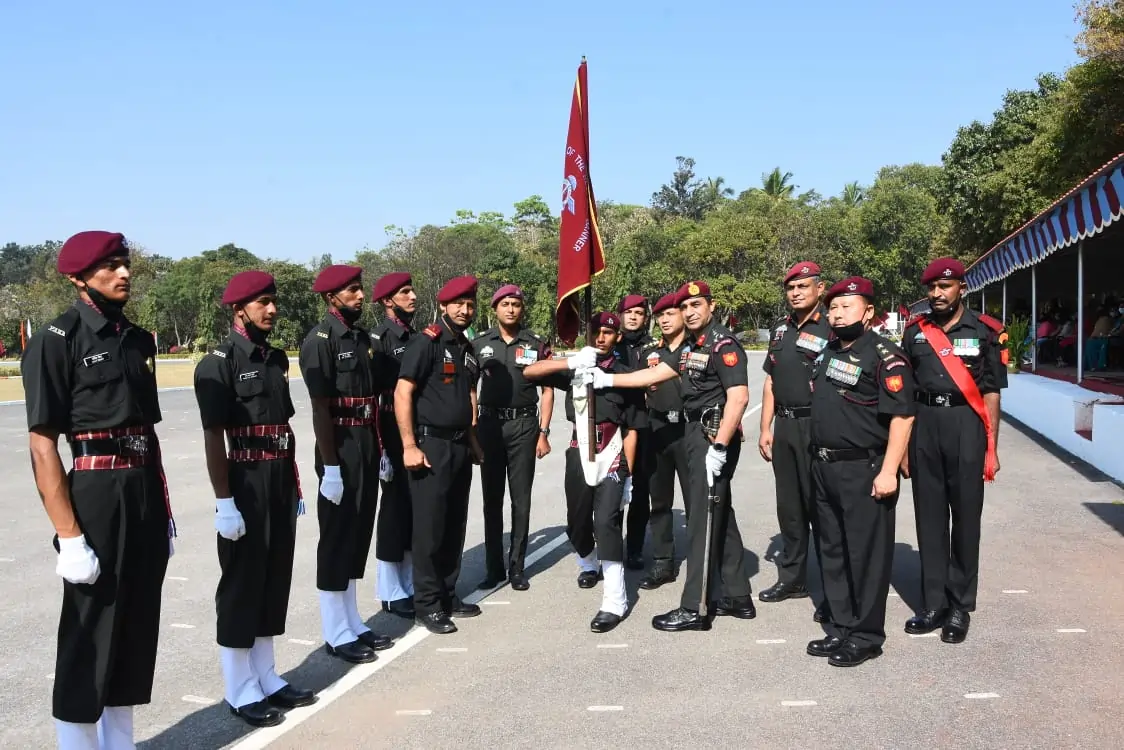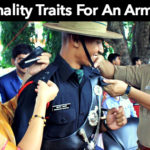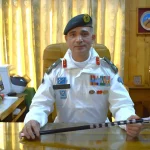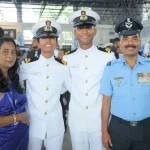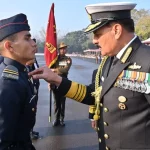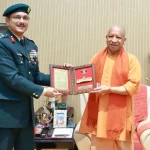The Parachute Regiment of the Indian Army represents the pinnacle of airborne and special operations warfare, a unit whose legacy is built on daring exploits, rigorous discipline, and unyielding valor. Often dubbed the “Red Devils” for their maroon berets and ferocious combat style, these soldiers are both a symbol of national pride and a formidable force in global military contexts. This comprehensive exploration delves into their origins, structure, training regimens, storied operations, honors, and evolving role in the 21st century, drawing from historical records, official documents, and recent developments. While celebrated for their effectiveness, the regiment’s high-stakes missions also spark discussions on the psychological toll on personnel and the balance between aggression and restraint in modern conflicts.
Historical Evolution
The roots of the Parachute Regiment trace back to World War II, when the British Indian Army formed the 50th Parachute Brigade on October 29, 1941. This unit comprised the 151st Parachute Battalion (British), 152nd (Indian), and 153rd (Gurkha), supported by artillery and medical elements. Early actions included operations against Pathan tribes in the North-West Frontier Province and reconnaissance in Burma. By 1943, the 154th Parachute Battalion joined, and the brigade saw intense combat at Sangshak in March 1944, inflicting heavy casualties on Japanese forces despite suffering significant losses themselves—around 585 personnel. The Battle of Sangshak earned praise from Lt. Gen. William Slim for delaying Japanese advances. Later, the brigade expanded into the 44th Indian Airborne Division (renamed 2nd Indian Airborne Division in 1945), incorporating Chindit brigades and planning for larger airborne corps, though the war’s end halted these ambitions.
Post-war disbandment followed, but the regiment’s airborne ethos persisted. After India’s independence and partition in 1947, the 50th Parachute Brigade remained with India, while others went to Pakistan. On April 15, 1952, the regiment was re-raised, absorbing three battalions: 1st Punjab (Para) as 1 PARA, 3rd Maratha LI (Para) as 2 PARA, and 1st Kumaon (Para) as 3 PARA. Expansion accelerated after the 1962 Sino-Indian War, adding the 4th to 8th battalions by 1964. The 51st Parachute Brigade was briefly raised but converted to infantry in 1976.
The special forces element emerged in 1966 with the 9th Battalion (Commando), formed from ad-hoc units successful in the 1965 Indo-Pak War. It split into 9 and 10 PARA (Commando) in 1967. In 1978, 1 PARA converted to special forces, followed by others like 2, 3, 4, 11, 12, 13, and 21 PARA (SF) over the decades. A major shift occurred in 2022, when five airborne battalions (5, 6, 7, 23, 29) were redesignated as PARA (SF) after specialized training, boosting the regiment’s operational flexibility.
Organizational Structure
As of 2025, the regiment comprises 15 regular special forces battalions, one Rashtriya Rifles battalion, and two Territorial Army units, all under the Parachute Brigade. Battalions specialize in terrains like mountains, deserts, and jungles, though cross-training ensures versatility. The primary weapon is the IWI Tavor TAR-21 assault rifle, with support from indigenous systems like the DRDO’s high-altitude parachutes.
| Battalion | Nickname | Primary Role/Specialization | Historical Notes |
|---|---|---|---|
| 1 PARA (SF) | Red Devils | Urban warfare, strategic reserve | Converted to SF in 1978; oldest SF unit. |
| 2 PARA (SF) | Predators | Jungle warfare | Converted in 2001; key in Sri Lanka ops. |
| 3 PARA (SF) | Dagger | Mountain warfare | Converted in 2002; active in Kargil. |
| 4 PARA (SF) | Mighty Daggers | Counter-terrorism, surgical strikes | Led 2016 Uri strikes; converted in 2003. |
| 5 PARA (SF) | Daggers | Airborne assault, rapid deployment | Redesignated SF in 2022. |
| 6 PARA (SF) | Poorbiya | Multi-terrain operations | Redesignated in 2022; roots in 1963 raise. |
| 7 PARA (SF) | Magnificent Seven | High-altitude warfare | Redesignated in 2022; mountaineering expertise. |
| 9 PARA (SF) | Ghost Operators/Pirates | Mountain warfare, covert ops | First commando unit (1966); specialized in Himalayas. |
| 10 PARA (SF) | Desert Scorpions | Desert warfare, raids | Split from 9 PARA in 1967; famous for 1971 Chachro raid. |
| 11 PARA (SF) | Vipers | Jungle/urban ops | Raised in 2010. |
| 12 PARA (SF) | Dirty Dozen/Wild Horns | Counter-insurgency | Raised in 2013. |
| 13 PARA (SF) | Thunderbolts | Specialist airborne | Raised in 2022 in Bangalore. |
| 21 PARA (SF) | Swat Cats | Jungle warfare | From Maratha LI; converted in 1996. |
| 23 PARA (SF) | Cheetahs | Multi-role | From Rajputana Rifles; redesignated 2022. |
| 29 PARA (SF) | Scorpions | Desert/mountain ops | From Rajput Regiment; redesignated 2022. |
| 31 RR (Cdo) | N/A | Rashtriya Rifles counter-insurgency | Attached unit. |
| 106 PARA (TA) | N/A | Territorial Army reserve | Based in Bengaluru. |
| 116 PARA (TA) | N/A | Territorial Army reserve | Based in Devlali. |
This structure allows for geographical specialization while maintaining overall readiness.
Training and Selection
Training is notoriously demanding, with a focus on producing resilient operators. All personnel are volunteers; recruits undergo basic parachute training at the Parachute Training School in Agra (3 weeks), earning para wings. For PARA (SF), a 90-day probation follows, featuring extreme tests: 100% in physical fitness, 50% in written exams, survival without food for days, and endurance marches with 60-kg loads. Only 10-15% pass, earning the Balidan Badge. Specialized courses include combat diving at Kochi, free-fall at Nahan (for mountain units like 9 PARA SF), and joint exercises with US/UK special forces. The full journey spans 3.5 years, emphasizing weapons, demolition, navigation, and medical skills.
| Training Phase | Duration | Key Elements | Pass Rate |
|---|---|---|---|
| Basic Parachute Course | 3 weeks | Static-line jumps, aerial maneuvers | High (volunteers only) |
| SF Probation/Selection | 90 days | Physical tests (e.g., 10 km run in 45 min with load), mental evaluations, survival drills | ~10-15% |
| Specialized SF Training | 6-12 months | Terrain-specific (jungle, desert, mountain), combat diving, free-fall | Varies by battalion |
| Advanced/Ongoing | Ongoing | Joint international exercises, leadership development | N/A |
This regimen ensures adaptability, though critics note the intense physical strain may lead to long-term health issues.
Notable Operations and Contributions
The regiment’s operational history is marked by audacious feats. In WWII, actions at Elephant Point (1945) facilitated Rangoon’s capture. Post-independence, the 60th Parachute Field Ambulance treated 20,000 in Korea (1950-1954), earning “Maroon Angels” moniker. In Gaza (1956-1967), they supported UN peacekeeping.
Key conflicts include:
- 1965 Indo-Pak War: Meghdoot Force raids by ad-hoc commandos.
- 1971 Indo-Pak War: Tangail airdrop by 2 PARA accelerated Bangladesh liberation; Chachro raid by 10 PARA SF captured territory without losses.
- Operation Pawan (1987-1990): IPKF in Sri Lanka, involving multiple battalions in counter-LTTE ops.
- Operation Cactus (1988): 6 PARA thwarted a Maldives coup in hours.
- Operation Blue Star (1984): Assault on Golden Temple.
- Kargil War (1999): Captured key peaks like Tololing.
- 2016 Surgical Strikes: 4 and 9 PARA SF crossed LoC post-Uri attack.
- Counter-insurgency: Ongoing in J&K and Northeast, with units like 21 PARA SF excelling in jungle warfare.
| Operation | Year | Key Units Involved | Outcome/Impact |
|---|---|---|---|
| Elephant Point (Burma) | 1945 | Gurkha PARA Bn | Facilitated Rangoon capture; earned airborne respect. |
| Tangail Airdrop | 1971 | 2 PARA | Hastened Dhaka fall; first major post-independence drop. |
| Chachro Raid | 1971 | 10 PARA SF | Captured Pakistani territory; minimal casualties. |
| Operation Cactus | 1988 | 6 PARA | Coup thwarted; restored Maldives government. |
| Kargil Conflict | 1999 | Multiple PARA SF | Key peaks secured; turned tide in high-altitude war. |
| Surgical Strikes | 2016 | 4 & 9 PARA SF | Neutralized terror launchpads; boosted national morale. |
These missions highlight tactical brilliance but also underscore risks, with debates on civilian impacts in counter-insurgency.
Honors and Legacy
The regiment boasts numerous gallantry awards, including Ashok Chakras, Maha Vir Chakras, and Vir Chakras. Battle honors like Shelatang, Naushera, and Chachro adorn its colors. Notable figures include Lt. Gen. Sagat Singh (PVSM) and honorary Lt. Col. Mahendra Singh Dhoni. The regiment excels in mountaineering, with summits of Everest (1965, 2003) and expeditions to the South Pole. Its insignia—a winged Shatrujeet on maroon—symbolizes conquest.

